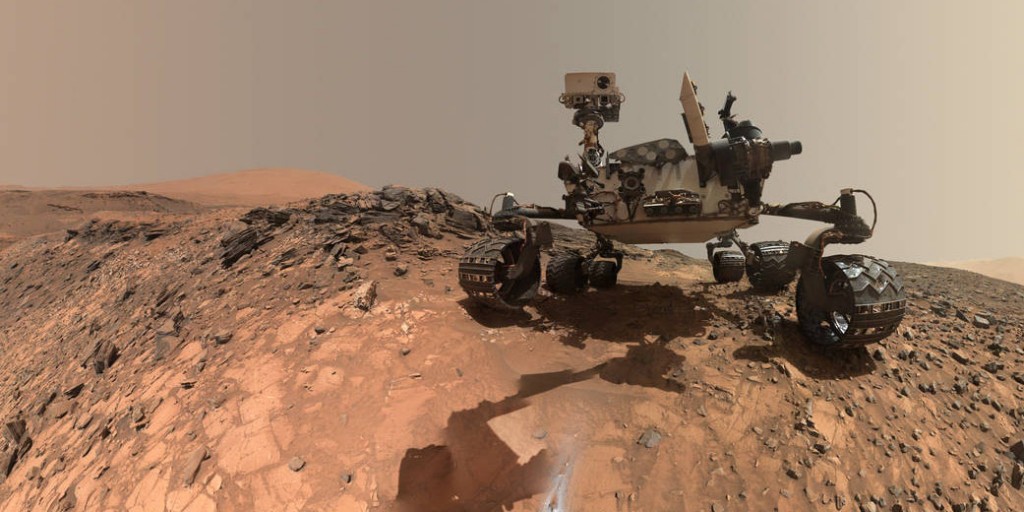Curiosity on Mars: Hydrogen find, selfie clicked
With the hopes of finding out why the area of Marias Pass is “wet”, Curiosity collected powdered samples of one of its rocks, which was called “Buckskin”, via drilling it, for the purposes of future study.
This image combines several pictures taken by Curiosity rover.
Curiosity, which landed on Mars in August 2012, has been turning the camera on itself for several self-portraits during its journey to the site called Marias Pass in the foothills of 3.4-mile high Mount Sharp.
But the robot arm can double as a selfie stick, and the camera scans across the rover to collect multiple views that image analysts on Earth can stitch together into a self-portrait.
According to deputy project manager of Curiosity, Steven Lee of NASA’s Jet Propulsion Laboratory, the team is glad that the rover did not suffer again from any short circuits during its Buckskin drilling and also during the sample transfer. For this shot, NASA said, the rover team positioned the camera lower than for any previous full self-portrait of Curiosity.
The aim of the mission is to find out why certain areas of rock have significantly higher levels of silica and hydrogen.
‘It could come back, but we have made changes in fault protection to continue safely drilling even in the presence of small shorts’.
Nasa’s Curiosity rover has been quite busy. The triangular patch is where the robot drilled Buckskin, while the circular tool shows were the hammer hit the ground.
The two patches of white-gray material seen in front of the rover are powdery rock material drilled from the hole. (The rover reached the base of that peak in September 2014.) Mission scientists want Curiosity to climb through the mountain’s lower reaches, reading a history of Mars’ changing environmental conditions in the rocks as it goes. The upper levels of Mount Sharp are visible behind the rover, while Gale Crater’s northern rim dominates the horizon on the left and right of the mosaic.








